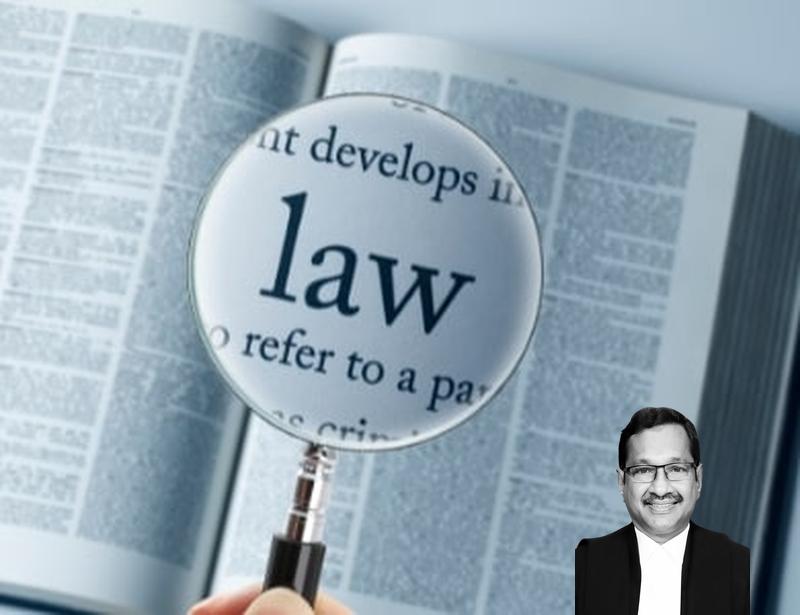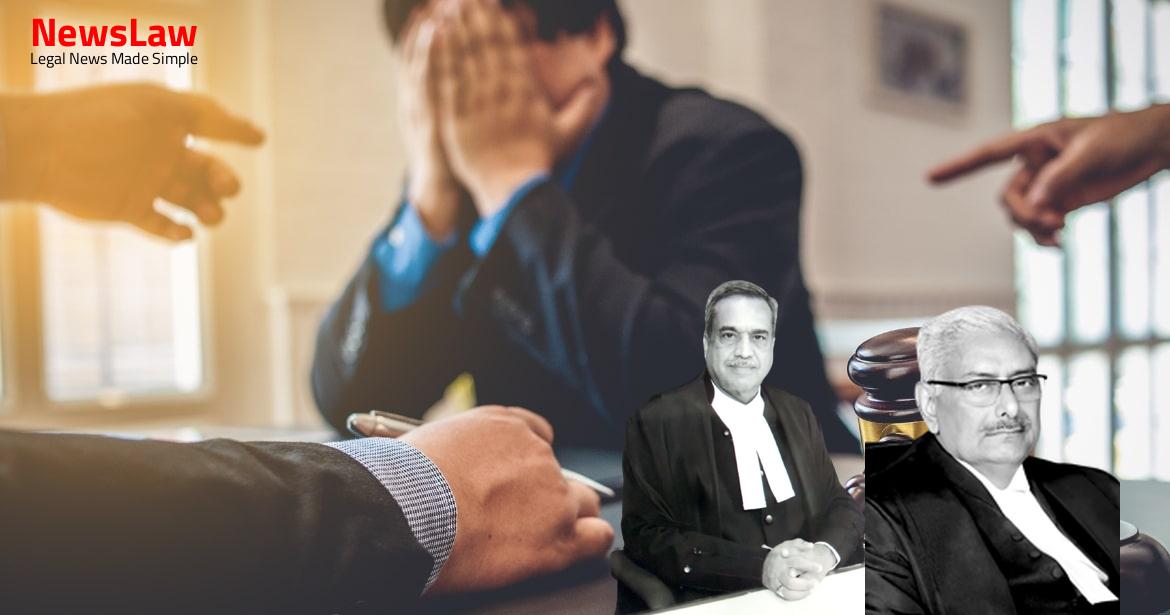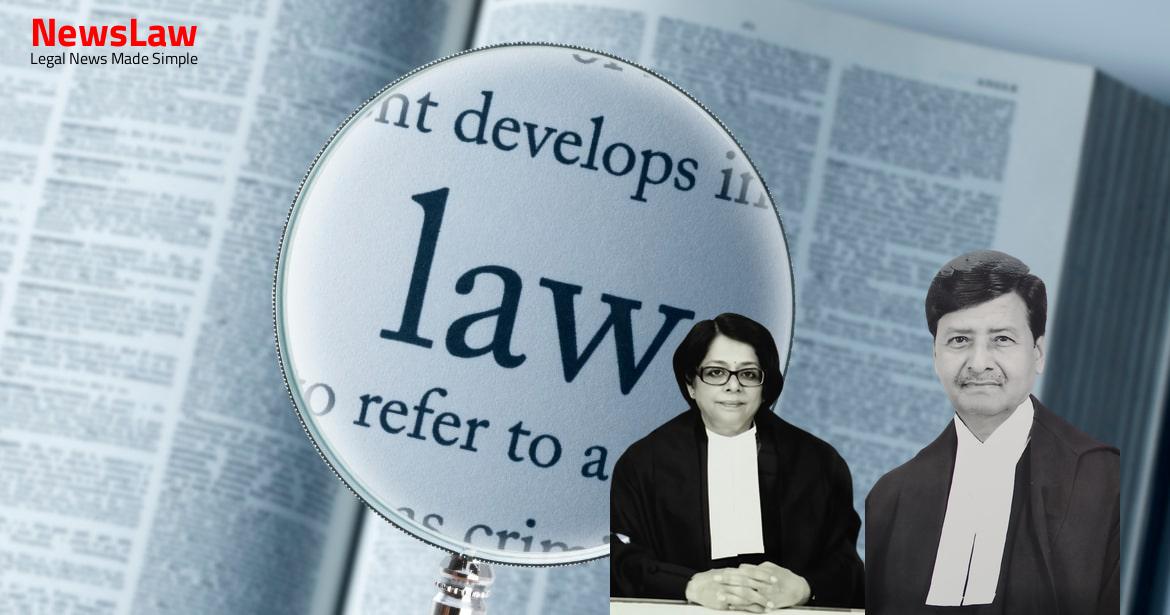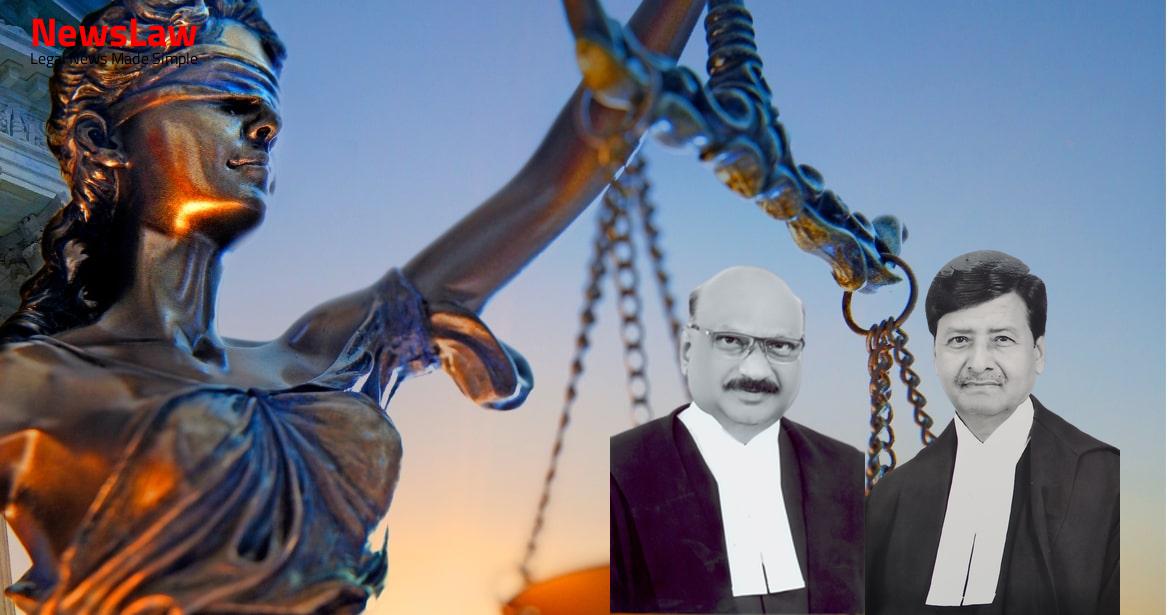For the offence punishable under Section 436 IPC, the convict was awarded life imprisonment with fine of Rs. 10,000/- and for the offence punishable under Section 326-A IPC, the appellant came to be sentenced for life imprisonment with fine of Rs. While the criminal reference was submitted by the trial court under Section 366 of the Code of Criminal Procedure, 1973 (for short, ‘the CrPC’) for confirmation of capital punishment awarded to the appellant- convict, the appellant-convict preferred an appeal by way of Capital Case No.
Also Read: https://newslaw.in/supreme-court/dismissal-of-application-seeking-bail-relief/
On 05.08.2014, at around 05.30 pm, PW-2 Shanu (convict’s brother) went to see deceased Naushad and had dinner with PW-4 (convict’s sister), Islamuddin and Irshad. On 06.08.2014, at around 12.30 am, the PW-2 is said to have woken up to see flames and smoke coming from the room, where the deceased persons were sleeping.
It is the case of the prosecution that the PW-2 and PW-4 opened the door and at that point of time, saw the appellant-convict running from the roof towards the stairs. In the same way, the dying declaration of Islamuddin was recorded on 07.08.2014. Dr Kuldeep Panchal, Lady Hardinge Medical College, New Delhi PW-8 9. Dr Arvind Kumar, Associate Prof., Forensic Medicine, Lady Hardinge Medical College, New Delhi PW-11 12. Forensic Science Laboratory Report, Agra dated 08.12.14 Exhibited by Court vide order dated 19.03.15 Exhibit Ka-2 3. Narender Singh Rawat Exhibit Ka-8 8 body of deceased Irshad dated 10.08.14 11. Medico Legal Post Mortem report of the deceased Islamuddin dated 19.08.14 PW-7 Dr.
Death report of the deceased Islamuddin dated 18.08.14 PW-12 Dr. Chick dated 06.08.14 PW-13 Constable FIR Clerk Riyazudeen Khan Exhibit Ka-17 24.
The trial court upon appreciation of the oral as well as the documentary evidence on record, arrived at the finding that the prosecution had been successful in establishing its case against the appellant-convict beyond reasonable doubt. The two dying declarations; one of Irshad and the other of Islamuddin could not have been relied upon, as they do not inspire any confidence and are in conflict with the ocular version of the two eye- witnesses.
It was pointed out by the learned Senior counsel that all the three Medico Legal Case (MLC) reports, which were prepared noted “No BP readable”. The second marriage of the appellant-convict was opposed by his son Islamuddin. That is the reason why the appellant-convict was at inimical terms with his own son Islamuddin and his two real brothers Naushad and Irshad. In the intervening night of 05/06.08.2014 at about 12.30 am in the night, the appellant set his real brothers, Naushad and Irshad on fire including his son Islamuddin by pouring highly inflammable substance on them, while they were sleeping in the room.
His sister Soni asked the PW-2 to stay back as it was late in the night. PW- 2 and his sister Soni slept in the adjoining room. Then, he saw that the convict had poured some highly inflammable substance in the room in which Islamuddin, Irshad and Naushad were sleeping and set it on fire. Her brothers, the convict, Naushad and Irshad and her nephew Islamuddin were present on the second floor of her house. After taking meal, Naushad and Islamuddin went to sleep in the adjoining room and Irshad was sleeping on a cot outside the room. After opening the door, they evacuated Naushad, Irshad and Islamuddin. Her brothers and nephew said that the convict set fire in the room after pouring petrol on account of which, all of them got burnt. Irshad, Naushad and Islamuddin were admitted on 06.08.2014, in the RML Hospital. Irshad died on 09.08.2014 at 07.30 pm. Islamuddin died on 18.08.2014 at 09.15 pm.
Exhibit Ka-2 and Exhibit Ka-5, the statement of Islamuddin does not bear the thumb impression or signature of anybody else except his own and the deceased.
On that day he had recorded the statement of Islamuddin aged about 16 years, son of the convict, resident of mohalla Muglooshah, Najibabad, District Bijnore. His first wife had left his house as his 17 brothers used to quarrel with her in respect of property. Then at 18 around 12.30 night my brother Irfan locked the door from outside and set fire in the room with some inflammable substance. We all seriously got burnt and after a long time neighbours took us out of the room and they got us admitted at the Pooja Hospital, Nazivabad. We all seriously got burnt and after a long time neighbours took us out of the room and they got us admitted at the Pooja Hospital, Nazivabad. Hospital New Delhi and my treatment is continuing here. Thus the principles governing interference by this Court in a criminal appeal by special leave may be summarised as follows: (1) that this Court would not interfere with the concurrent finding of fact based on pure appreciation of evidence even if it were to take a different view on the evidence; (2) that the Court will not normally enter into a reappraisement or review of the evidence, unless the assessment of the High Court is vitiated by an error of law or procedure or is based on error of record, misreading of evidence or is inconsistent with the evidence, for instance, where the ocular evidence is totally inconsistent with the medical evidence and so on; (3) that the Court would not enter into credibility of the evidence with a view to substitute its own opinion for that of the High Court; (4) that the Court would interfere where the High Court has arrived at a finding of fact in disregard of a judicial process, principles of natural justice or a fair hearing or has acted in violation of a mandatory provision of law or procedure resulting in serious prejudice or injustice to the accused; (5) this Court might also interfere where on the proved facts wrong inferences of law have been drawn or where the conclusions of the High Court are manifestly perverse and based on no evidence.
The defence put forward by the appellant-convict is that with a view to grab the property, PW-2 Shanu alias Shahnawaz, PW-4 Soni and others conspired to eliminate the deceased persons and thereafter, to throw the entire blame on the appellant-convict of having committed the crime. It is also pertinent to note that in both the dying declarations it has been very 21 clearly stated that after a long time a neighbour came to their rescue and took them out of the burning room. In the same manner, if we closely look into the oral evidence of the PW-4 Soni, then according to her on seeing the flames of fire in the room, in which the deceased persons were sleeping, she immediately opened the door and saw that the appellant-convict was running from the roof towards the stairs.
If PW-2 and PW-4 were present at the time when the room was on fire and it is they who opened the door and took out the three deceased persons, then why the PW-2 and PW-4 do not figure in the dying declarations of Irshad and Islamuddin?
Since the accused has no power of cross- examination, the courts insist that the dying declaration should be of such a nature as to inspire full confidence of the court in its truthfulness and correctness. It is also not in dispute that the room in which they were sleeping caught fire on account of which they suffered severe burn injuries. We find it very difficult to believe that the appellant-convict was still inside the room or even outside the room to be witnessed by the deceased persons as well as by the PW-2 and PW-4, locking the room from outside after setting the room on fire. Had the dying declarations corroborated stood by the oral evidence of the PW-2 and PW-4, then probably, it would have been altogether a different scenario. (b) But a difficulty also arises with respect to these declarations; for it has not appeared and it seems impossible to find out, whether the deceased herself apprehended that she was in such a state of morality as would inevitably oblige her soon to answer before her Maker for the truth or falsehood of her assertions. It is significant to note the observations made by Taylor that “Though these declarations, when deliberately made under a solemn sense of impending death, and concerning circumstances wherein the deceased is not likely to be mistaken, are entitled to great weight, if precisely identified, it should always be recollected that the accused has not the power of cross examination, a power quite as essential to the eliciting of the truth as the obligation of an oath can be, and that, where a witness has not a deep sense of accountability to his Maker, feelings of anger or revenge, or, in the case of mutual conflict, the natural desire of screening his own misconduct, may effect the accuracy of his statements and give a false colouring to the whole transaction. It is observed in Corpus Juris Secundum Vol XL, Page 1283 that: “In weighing dying declarations, the jury may consider the circumstances under which they were made, as, whether they were due to outside influence or were made in a spirit of revenge, or when declarant was unable or unwilling to state the facts, the inconsistent or contradictory character of the declarations, and the fact that deceased has not appeared and accused has been deprived of the opportunity to cross- examine him, and may give to them the credit and weight to which they believe, under all the circumstances, they are fairly and reasonably entitled.” In India in the relevant provision of Section 32 of the Act 1872, the first exception to the rule against admissibility of hearsay evidence, is as under: “ 32(1). How reliable is 27 the perception and memory of a person who is dying? )” [See: Waltz, J.R.
It appears that rule of practice has been developed that when a dying declaration has been the only evidence implicating an accused person a conviction usually cannot be allowed to stand where there had been a failure to give a warning on the necessity for corroboration: see for example Pius Jasunga s/o Akumu v.
That section provides that statements of relevant facts made by a person who is dead are themselves relevant facts: “When the statement is made by a person as to the cause of his death, or as to any of the circumstances of the transaction which resulted in his death, in cases in 28 which the cause of that person’s death comes into question.
The Queen it was pointed out (for the reason associated with the italicised words in the subsection) that the weight to be attached to a dying declaration admitted by reference to section 32 of the Indian Evidence Act 1872 would necessarily be less than that attached to a dying declaration admitted under the common law rules. Shakespeare makes the wounded Melun, finding himself 29 disbelieved while announcing the intended treachery of the Dauphin Lewis explain: “Have I met hideous death within my view, Retaining but a quantity of life, Which bleeds away even as a form of wax, Resolveth from his figure ‘gainst the fire? Though a dying declaration is entitled to great weight, it is worthwhile to note that the accused has no power of cross- examination. Once the court is satisfied that the declaration was true and voluntary, undoubtedly, it can base its conviction without any further corroboration. State of Madhya Pradesh reported in (2012) 4 SCC 327 had explained the meaning and principles of dying declarations upon which its admissibility is founded, with the following observations: – “ 20. It is the duty of the courts to find that the deceased was in a fit state of mind to make the dying declaration. What value should be given to a dying declaration is left to court, which on assessment of the circumstances and the evidence and materials on record, will come to a conclusion about the truth or otherwise of the version, be it written, oral, verbal or by sign or by gestures.” (Emphasis supplied) 59.
Case Title: IRFAN@ NAKA Vs. THE STATE OF UTTAR PRADESH
Case Number: Crl.A. No.-000825-000826 / 2022



